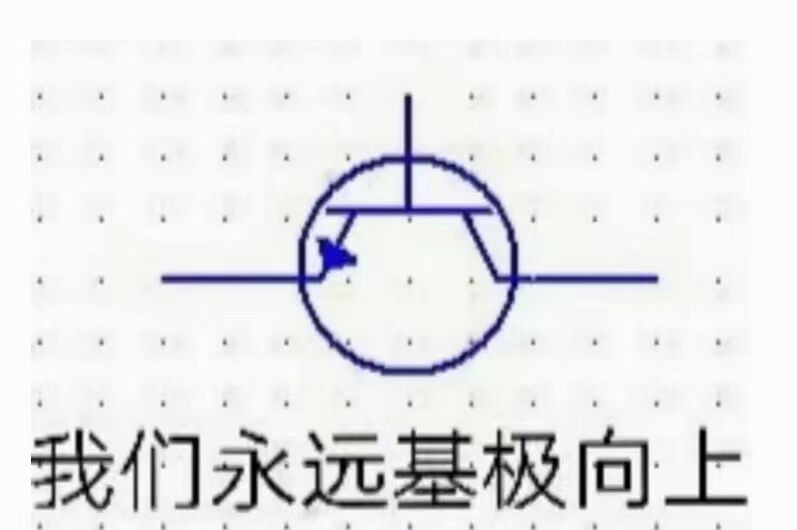2024 春夏季训练营记录 说明 本文为训练营的每日实践记录索引,主要为按日期较随意地写下每天的记录与想法。
同时还包含对其他资料、笔记的索引。
更详细的记录在 github 仓库里 https://github.com/hehepig166/2024-OS-camp-notes
工具与资料 训练营社区 https://opencamp.cn/os2edu/camp/2024spring/
Github LearningOS https://github.com/Learningos
Open-Source OS Training Comp 2024 https://github.com/LearningOS/rust-based-os-comp2024
日历
04-07
群公告https://opencamp.cn/os2edu/camp/2024spring/stage/0?tab=video
在训练营常见问题Q&A文档https://docs.qq.com/doc/DY3VMc0tOc29KTWZ5 中,对于本期训练营有一些基本问题的介绍,也可以在群里询问
2024春夏季训练营启动仪式回放https://meeting.tencent.com/v2/cloud-record/share?id=95ecb9c0-64f2-4934-a671-78474f735af2&from=3&record_type=2
开营仪式
rustlings -> Rust 学习
rcore -> Rust 重写内核实验
ArceOS -> 组件化 OS 项目
之前几周已经开始学习 Rust,做了 rust-lang 下的 rustlings
rust-lang::rustlings https://github.com/rust-lang/rustlings
我的解答与极其简陋随性的学习日志 https://github.com/hehepig166/my-solution-to-rustlings
(主要是 Rust 资料实在是太多了,我就只写一点关键词提一下记忆即可)
配置了一下 wsl
04-08
@所有人 各位同学,第一阶段“Rust编程语言 & Rustlings答疑”第一次课程将于今晚8点开始,今晚的主要内容为Rustlings练习入门、基本数据类型,slice类型,所有权等,总共一个课时,请大家预留时间,按时进入课堂!!
上课方式:点击 https://opencamp.cn/os2edu/camp/2024spring/stage/1 链接,签到并进入课堂进行直播上课
https://learningos.cn/rust-rustlings-2024-spring-ranking/
https://github.com/LearningOS/rust-rustlings-2024-spring-hehepig166
使用 ssh 链接 clone,用 ssh 鉴权
wsl2 /mnt/ 下 rustlings 更新编译可能会出问题,开发最好不要在 /mnt 目录下操作
module 的 pub 关键字只往上 pub 一层
1 2 3 4 5 6 7 8 9 10 11 12 13 14 15 16 17 18 19 20 21 22 23 24 25 26 mod delicious_snacks { pub use self::fruits::PEAR as fruit; pub use self::veggies::CUCUMBER as veggie; mod fruits { pub const PEAR: &'static str = "Pear" ; pub const APPLE: &'static str = "Apple" ; } mod veggies { pub const CUCUMBER: &'static str = "Cucumber" ; pub const CARROT: &'static str = "Carrot" ; } } fn main println! ( "favorite snacks: {} and {}" , delicious_snacks::fruit, delicious_snacks::veggie ); let b = delicious_snacks::fruit; }
04-09 std::f64::NAN
Rust 中两个 NAN 是不相等的,要判断一个浮点数是不是 NAN,可以用 .is_nan() 函数来判断。
完成了 rust-lang 里的 rustlings。
在 Rust 中,? 是一个简便的错误处理操作符,通常用于简化对 Result 或 Option 类型的值进行处理的代码。它的作用是在操作成功时返回成功的结果,如果遇到错误则将错误提早返回。
在函数中使用 ? 时,该函数的返回类型必须是 Result 或 Option。如果表达式的结果是 Ok(对于 Result 类型)或 Some(对于 Option 类型),则 ? 会将其中的值提取出来并返回;如果结果是 Err 或 None,则整个函数会提前返回并将 Err 或 None 作为整个函数的返回值。
04-10
@所有人 各位同学,第一阶段“Rust编程语言 & Rustlings答疑”第二次课程将于今晚8点开始,今晚的主要内容为Rustlings答疑,总共一个课时,请大家预留时间,按时进入课堂!!
上课方式:点击 https://opencamp.cn/os2edu/camp/2024spring/stage/1 链接,签到并进入课堂进行直播上课。
如果同学们有什么问题也可以在问题收集页面https://docs.qq.com/doc/DSXFzRkdodExxQUVO给老师提一下哦~
rustlings test 章节
#[cfg()]
cfg() 可以接受一些不同的条件,用于控制编译时的行为。这些条件可以是 Rust 编译器理解的一些特定标识符,也可以是自定义的条件。下面是一些常见的 cfg() 条件:
target_os: 目标操作系统,如 "windows", "linux", "macos" 等。target_arch: 目标架构,如 "x86", "x86_64", "arm" 等。target_env: 目标环境,如 "gnu", "msvc", "musl" 等。target_pointer_width: 目标指针宽度,如 "32", "64" 等。feature: 启用的特性,如 "myfeature"。any(): 如果任一条件为真则为真,语法为 cfg(any(condition1, condition2, ...))。all(): 如果所有条件为真则为真,语法为 cfg(all(condition1, condition2, ...))。not(): 取反,语法为 cfg(not(condition))。自定义条件:你可以在 build.rs 或者 Cargo.toml 中定义自己的条件,然后在 cfg() 中使用。
这些条件可以根据实际需要组合使用,以便根据不同的情况编译不同的代码。
外部链接 FFI(Foreign Function Interface)
extern
这段代码指定 my_demo_function 与 my_demo_function_alias 从符号表中找名字为my_demo_function的函数链接。
而在 Foo::my_demo_function 中又指定了 #[no_mangle] ,即在编译后的目标文件中的符号名称可见并保持不变,被上面两个 extern 找到并使用。
注意这里利用这个东西,使这个函数的的 private 属性失效了。 FFI
1 2 3 4 5 6 7 8 9 10 11 12 13 14 15 16 17 18 19 20 21 22 23 24 25 26 27 28 29 30 31 32 33 34 35 36 37 38 extern "Rust" { #[link_name = "my_demo_function" ] fn my_demo_function u32 ) -> u32 ; #[link_name = "my_demo_function" ] fn my_demo_function_alias u32 ) -> u32 ; } mod Foo { #[no_mangle] fn my_demo_function u32 ) -> u32 { a } } #[cfg(test)] mod tests { use super::*; #[test] fn test_success unsafe { my_demo_function(123 ); my_demo_function_alias(456 ); } } }
traits 类似 C++ 中的虚基类和虚函数
1 2 3 4 5 6 fn main Result <(), Box <dyn error::Error>> { let pretend_user_input = "42" ; let x: i64 = pretend_user_input.parse()?; println! ("output={:?}" , PositiveNonzeroInteger::new(x)?); Ok (()) }
区别 ref mut root 和 mut &root
04-11 rustlings algorithm5 bfs, algorithm6 dfs
“闭包”
04-12
@所有人 各位同学,第一阶段“Rust编程语言 & Rustlings答疑”第三次课程将于今晚8点开始,今晚的主要内容为crate,option,trait和泛型及生命周期,总共一个课时,请大家预留时间,按时进入课堂!!
上课方式:点击 https://opencamp.cn/os2edu/camp/2024spring/stage/1 链接,签到并进入课堂进行直播上课。
如果同学们有什么问题也可以在问题收集页面https://docs.qq.com/doc/DSXFzRkdodExxQUVO给老师提一下哦
rustlings algorithm7,8 stack, algorithm9 heap, algorithm10 graph
rustlings 完成了
继续学习rust生命周期
表达式 vs. 语句
super::
泛型, trait, 生命周期
trait 作为参数,可以指定多个trait
1 2 3 4 5 6 7 8 9 10 11 12 13 14 15 16 17 18 19 20 21 22 23 24 25 pub fn notify impl Summary) { println! ("Breaking news! {}" , item.summarize()); } pub fn notify println! ("Breaking news! {}" , item.summarize()); } pub fn notify impl Summary + Display));pub fn notify fn fun Clone , U: Clone + Debug >(t: &U, u: &U) -> i32 {}fn fun i32 where T:Display + Clone , U: Clone + Debug , { }
引用的生命周期
做一做 rust quiz
04-13 使用工具 rustfmt 可以自动将代码格式化。有助于分析代码。
代码分析
1 2 3 4 5 6 7 8 9 10 11 12 13 14 15 16 macro_rules! m { ($($s:stmt)*) => { $( { stringify! ($s); 1 } )<<* }; } fn main print! ( "{}{}{}" , m! { return || true }, m! { (return ) || true }, m! { {return } || true }, ); }
这个是纯秀语法,没实际意义。
上面定义了一个宏规则 m。
$()* 代表匹配一个或多个。
$s:stmt代表 s 是一个 statement。
=> {} 表示匹配到模式后要展开成的代码块规则。
$()<<* 表示对每个 statement 得到的代码块用 << 连接。
关键在于分析三行代码中各自有几个 statement。
第一个 return || true,是一个返回闭包 || true 的 return 语句。
第二个 (return) || true,是一个逻辑或语句。(虽然过不了编译,但是后面是转成字符串所以没事)。
第三个 {return} || true 是两个语句,一个是 {return} 语句块,另一个是 || true 闭包。
展开后,我的理解是这样:
1 2 3 4 5 6 7 8 fn main print! ( "{}{}{}" , { "return || true" ; 1 }, { "(return) || true" ; 1 }, { "{return}" ; 1 }<<{ "|| true" ; 1 }, ) }
04-14 继续看看 rust quiz
04-16 去看了吉卜力展
04-17 rust quiz
rcore 实验一
学习:Rust 生命周期
在完成本次实验的过程(含此前学习的过程)中,我曾分别与 以下各位 就(与本次实验相关的)以下方面做过交流,还在代码中对应的位置以注释形式记录了具体的交流对象及内容:
《你交流的对象说明》
此外,我也参考了 以下资料 ,还在代码中对应的位置以注释形式记录了具体的参考来源及内容:
《你参考的资料说明》
我独立完成了本次实验除以上方面之外的所有工作,包括代码与文档。 我清楚地知道,从以上方面获得的信息在一定程度上降低了实验难度,可能会影响起评分。
我从未使用过他人的代码,不管是原封不动地复制,还是经过了某些等价转换。 我未曾也不会向他人(含此后各届同学)复制或公开我的实验代码,我有义务妥善保管好它们。 我提交至本实验的评测系统的代码,均无意于破坏或妨碍任何计算机系统的正常运转。 我清楚地知道,以上情况均为本课程纪律所禁止,若违反,对应的实验成绩将按“-100”分计。
04-23 Rust 学习
闭包(匿名函数)
智能指针
Box -> 将值放在堆上而非栈上
针对编译时位置大小的类型
有大量数据并确保数据不被拷贝的情况下转移所有权时
拥有一个值并只关心它的类型是否实现了特定trait而非具体类型时
Deref trait
Rc -> 引用计数
图
clone
克隆 Rc<T> 会增加其引用计数
不可变引用
RefCell -> 内部可变性指针
Interior mutability
该数据结构中使用了 unsafe 代码来模糊 Rust 通常的可变性和借用规则
任意时刻,只能拥有一个可变引用或任意数量的不可变引用之一
引用必须总是有效的
async








